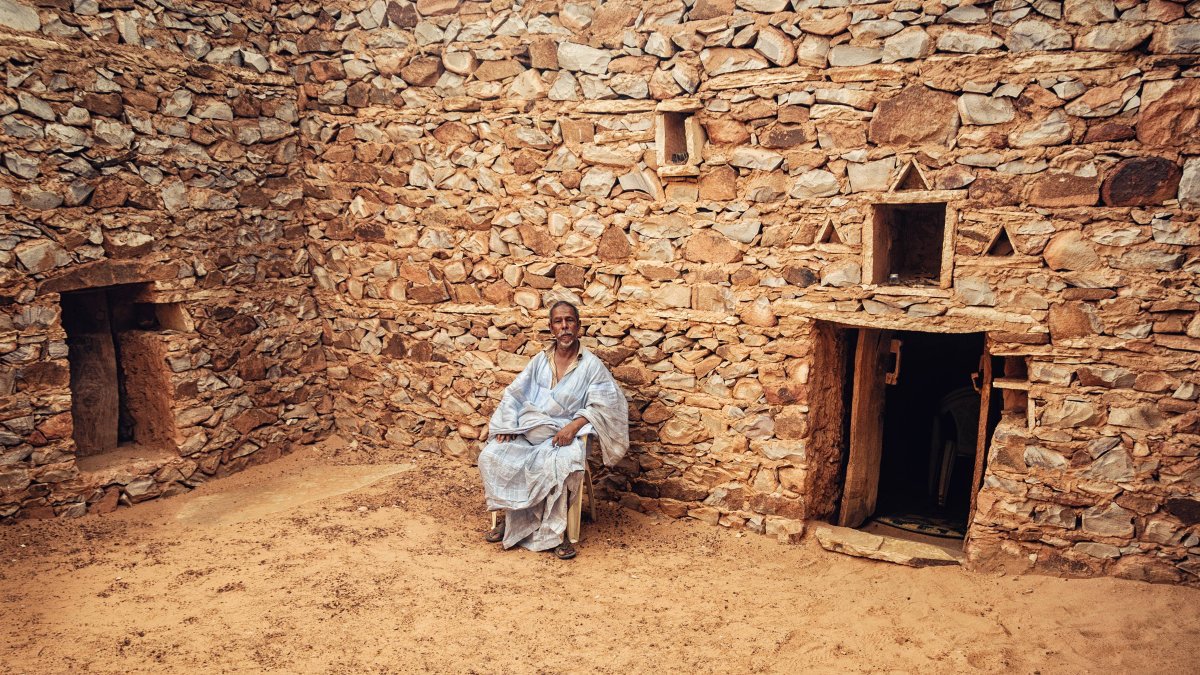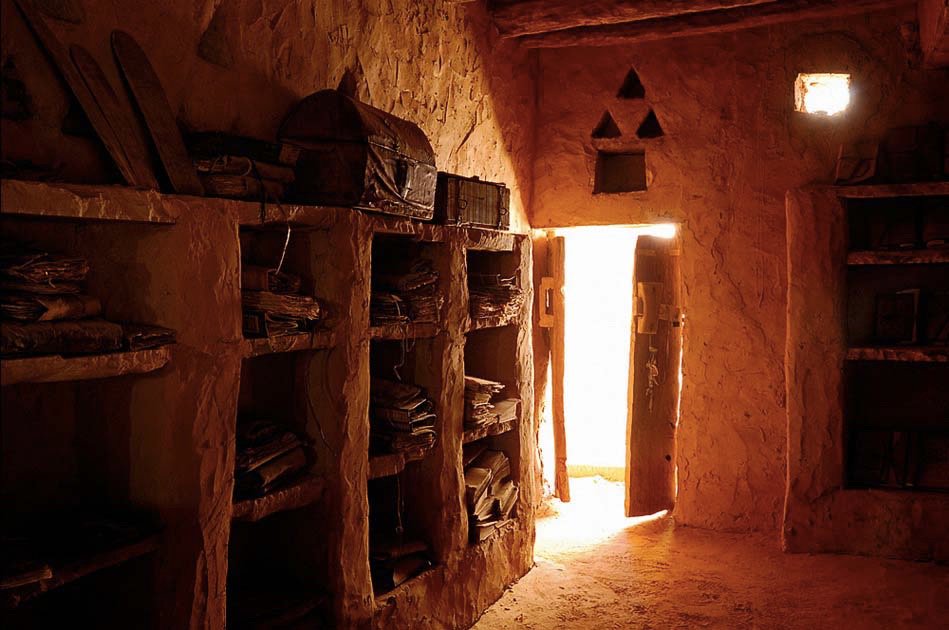Desert libraries of Chinguetti

I did not know about these wonderful places. For hundreds of years, families in Mauritania have been maintaining libraries of old Arabo-Berber books. Originally on the route of pilgrims travelling to Mecca, the libraries are now at risk from the spreading Sahara and ever dwindling numbers of visitors, in part because of security restrictions due to terrorism.
This thread by Incunabla brought their existence to my attention.
Most of Chinguetti consists of abandoned houses which are being swallowed up by the ever encroaching dunes of the Sahara. But this was once a prosperous city of 20 000 people, and a medieval centre for religious and legal scholars. It was known as “The City of Libraries”.

Lower down the thread, we are directed to this piece at the Guardian, Mauritania’s hidden manuscripts.
The bone-dry wood creaks as the book opens at a page representing the course of the moon, framed by black balls and red crescents. The manuscript contains 132 pages of Arab astronomy bound in well-worn leather, a 15th-century treasure stored, with similar items, in a cardboard box in a traditional dwelling in Chinguetti.
Seen as a legacy from their ancestors, the families feel it’s an honour for them to care for these books.
About 600km north-east of the capital, in Chinguetti, once a centre of Islamic learning, the Habott family owns one of the finest private libraries, with 1,400 books covering a dozen subjects such as the Qur’an and the Hadith (the words of the Prophet), astronomy, mathematics, geometry, law and grammar. The oldest tome, written on Chinese paper, dates from the 11th century.
Also linked in the thread, more pictures at Messy Nessy.





Stay Connected